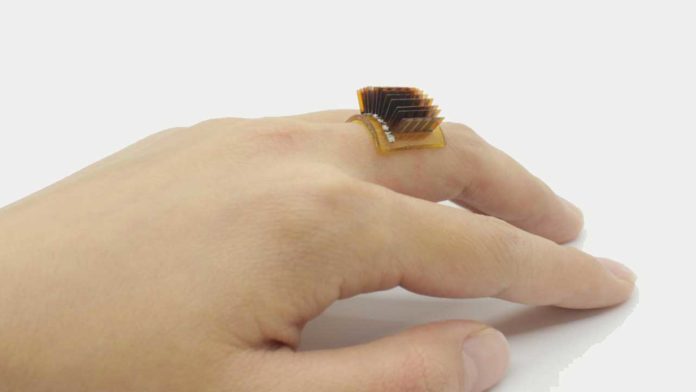In the future, we will be able to power our wearables without having to include the battery. Scientists from the University of Colorado Boulder have developed a new, low-cost wearable device that transforms the human body into a biological battery.
Because of its extreme flexibility, the device can be worn as a ring, bracelet, or any other accessory that touches your skin. By tapping into a person’s natural heat, the device equipped with thermoelectric generators converts the body’s internal temperature into electricity.
The device can create around 1 volt of energy for each square centimeter of skin space—less voltage per region than what most existing batteries give yet enough to power electronics like watches or fitness trackers. What’s more, it can heal itself when damaged and is fully recyclable—making it a cleaner alternative to traditional electronics.
Jianliang Xiao, senior author of the new paper and an associate professor in the Paul M. Rady Department of Mechanical Engineering at CU Boulder, said, “Whenever you use a battery, you’re depleting that battery and will, eventually, need to replace it. The nice thing about our thermoelectric device is that you can wear it, and it provides you with constant power.”
To develop this device, scientists used a base made from a stretchy material called polyimine. The scientists then stick a series of thin thermoelectric chips into that base, connecting them with liquid metal wires. The eventual outcome resembles a cross between a plastic bracelet and a miniature computer motherboard or possibly a techy diamond ring.
Xiao said, “Our design makes the whole system stretchable without introducing much strain to the thermoelectric material, which can be brittle. The thermoelectric generators are in close contact with the human body, and they can use the heat that would normally be dissipated into the environment.”
“You can easily boost that power by adding in more blocks of generators.”
One more fascinating feature of the device: it is resilient as biological tissue. If your device tears, for example, you can pinch together the broken ends, and they’ll seal back up in just a few minutes. And when you’re done with the device, you can dunk it into a special solution that will separate out the electronic components and dissolve the polyimine base. Every one of those ingredients can then be reused.
Xiao said, “We’re trying to make our devices as cheap and reliable as possible, while also having as close to zero impact on the environment as possible.”
Journal Reference:
- Wei Ren et al. High-performance wearable thermoelectric generator with self-healing, recycling, and Lego-like reconfiguring capabilities. DOI: 10.1126/sciadv.abe0586
